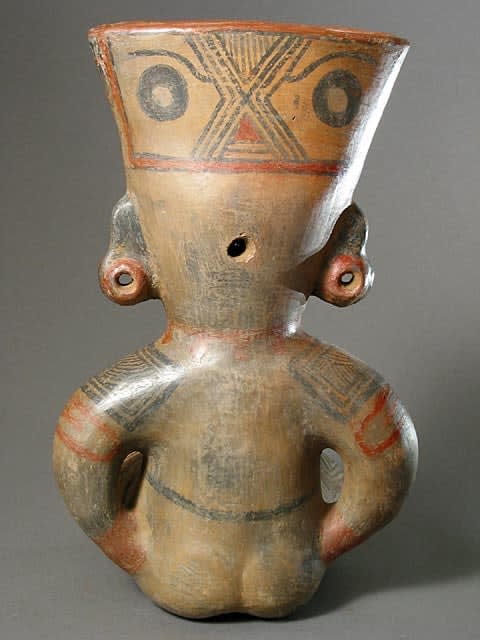Seated Guabal Polychrome Figure, 800 CE - 1100 CE
Terracotta
14.5
PF.3547
Further images
As the Guanacaste-Nicoya polychrome tradition came into full flower during period V, the long tradition of seated female figurines continued. The striking realism of the galo polychrome pieces, however, dramatically...
As the Guanacaste-Nicoya polychrome tradition came into full flower during period V, the long tradition of seated female figurines continued. The striking realism of the galo polychrome pieces, however, dramatically changed into the type called guabal polychrome which date two to four centuries after galo figures. Although the guabal polychrome displays colorful, almost allover body painting, the figures are stylized and abstract. This female figure sits with her arms to her waist and her bold features and colorful body grabs our attention in an instant. She wears large earspools and a flat but high headdress, which is elaborately decorated with intricate patterns. Her facial features are outlined with black and orange paint, accentuating her unique character and disposition. Her body is decorated to enhance her feminine beauty and fertility. The bold, black patterns emphasize her breasts and the large cross-hatching patterns on her legs really show the exaggerated thighs. Such motifs denote the idea of fertility and life that were cherished so dearly in ancient Meso-America. The female figure sits proudly, so sure of her existence, beauty, and life. This ancient beauty certainly is to last for ages to come.
Literature
V18







